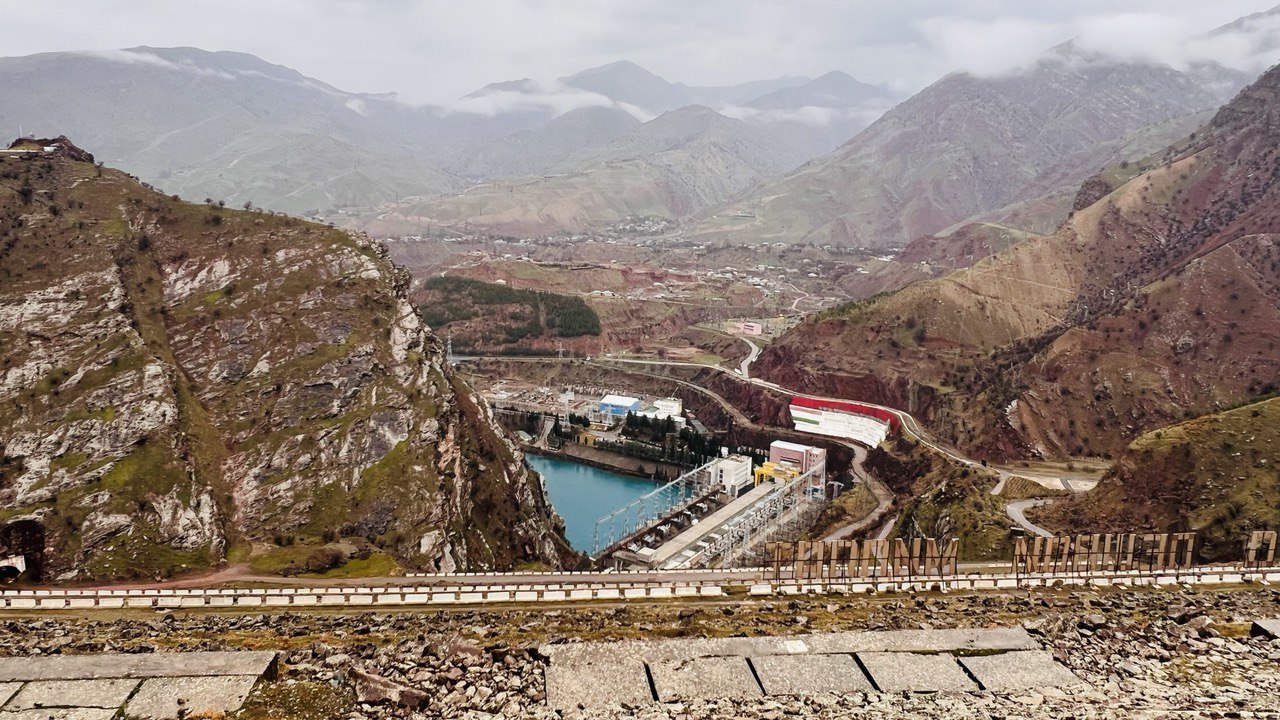For the first time since the start of armed clashes on the Kyrgyz-Tajik border, business cooperation between the two countries has begun to return. Kyrgyz Energy Minister Taalaibek Ibrayev and his delegation recently visited a pair of Tajikistan’s energy facilities, the Rogun and Nurek hydroelectric power plants (HPP), according to the press service of the Kyrgyz Ministry of Energy.
Tajikistan’s Deputy Minister for Energy Halmukhamadzoda Sobron showed Kyrgyz colleagues how the Rogun HPP is being built, as well as some special underground facilities and tunnels under the plant. Sobron described problems faced by Tajik hydro construction workers when using construction equipment at the site, and detailed the integrated stage-by-stage approach to building the main structures of the hydropower plant.
“More than 15,000 hydro construction workers are involved in the construction of the Rogun HPP, more than 300,000 machines and equipment are operated, and skillful planning allows dozens of contracting companies to work simultaneously,” Tajik power engineers emphasized.
The Kyrgyz side noted that the exchange of experience in the construction of such grandiose facilities will be useful in the construction of Kambar-Ata HPP-1 in Kyrgyzstan.
During the three-day visit, Kyrgyz power engineers also visited plants responsible for the production of hydromechanical equipment and for the production of electrical equipment. During the meetings it was emphasized that after the border issue is resolved, the sides are ready to cooperate with each other again on all issues.
Kyrgyzstan and Tajikistan are usually connected by high-voltage power lines, which play an important role in the regular supply of electricity to local residents living in the border areas. However, these lines are now out of operation.
The problem with the border between the two countries arose after the collapse of the USSR. Essentially both parties claimed land that’s rich in water resources, as the issue of agricultural irrigation is very relevant in the arid region. More than 30 years have passed since then, and the parties still cannot agree on the disputed territories. Because of this, conflicts periodically arise between citizens of border villages — as well as residents of enclaves and border guards of Kyrgyzstan and Tajikistan — including with the use of heavy weaponry. The last such conflict took place in the Batken region of Kyrgyzstan and Sughd region of Tajikistan in September 2022 — at which time there were hundreds of deaths on both sides and civilian infrastructure was destroyed. Since May 2021, transportation by land or air between the countries remains closed. Trade and all business contacts have been suspended.
To date, the two countries have agreed to demarcate about 90% of the disputed territories.
Rogun HPP is a hydroelectric power plant under construction on the Vakhsh River. It is the largest HPP in Central Asia. Construction of Rogun HPP began in the 1970s, but in the 1990s work was stopped due to the collapse of the Soviet Union and the outbreak of civil war in Tajikistan. Construction resumed only in 2010 with the support of the World Bank. The first of six units planned for Rogun was commissioned in 2018. When all infrastructure is complete, the average annual electricity generation at the plant will be more than 17 billion kWh per year. The dam under construction, as Tajik power engineers note, will be the highest rock-fill type dam in the world.



